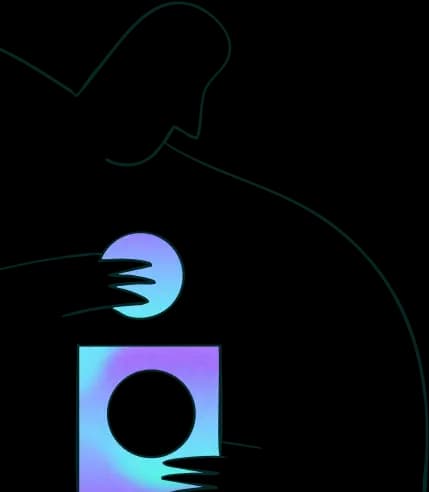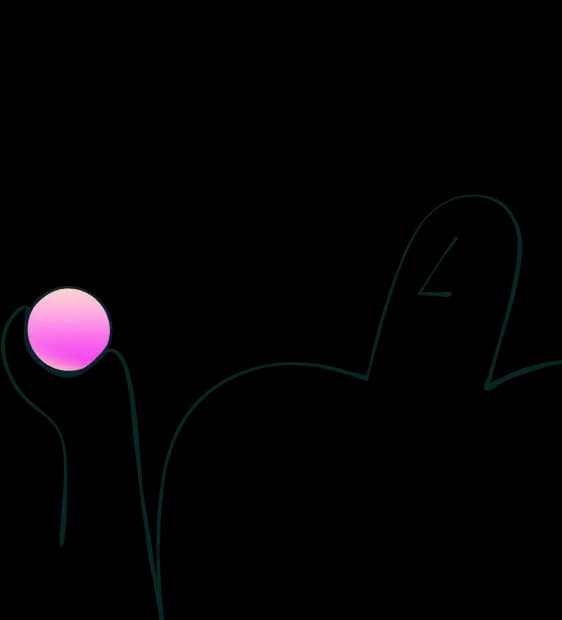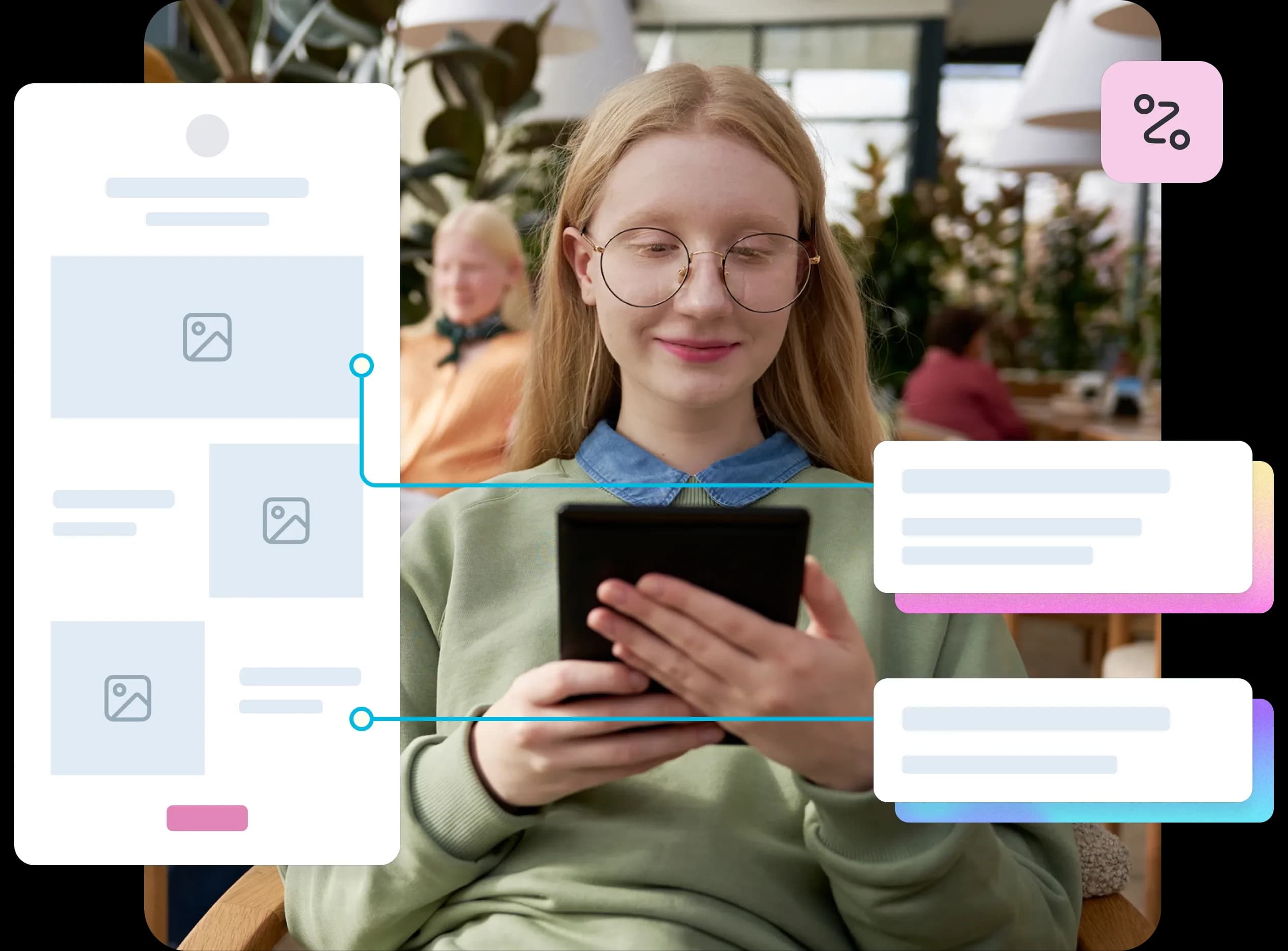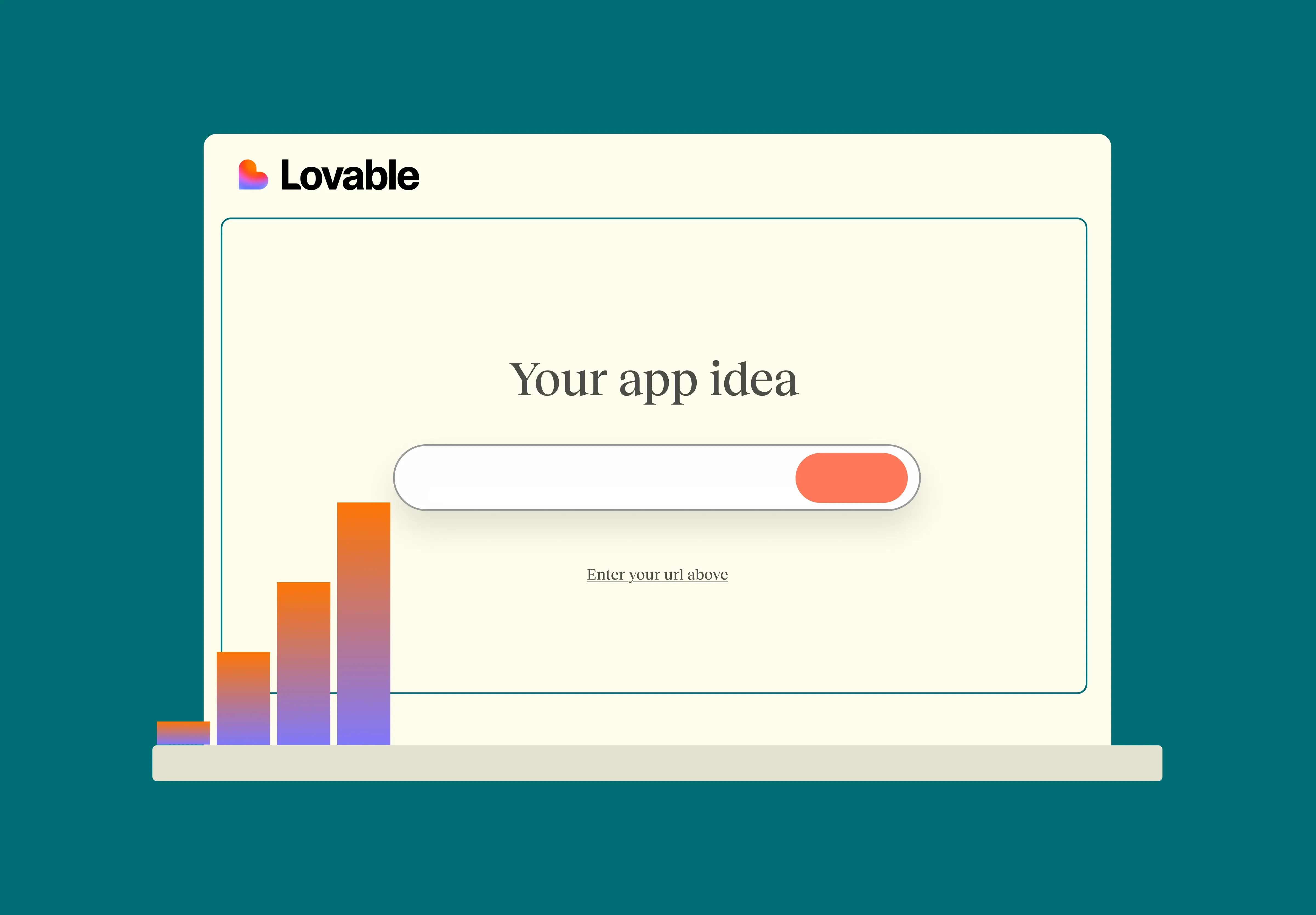06 Aug 2025
|16 min
CX vs UX
Understand the difference between customer experience (CX) and user experience (UX), how they overlap, and why both are essential for product success.

The acronyms keep multiplying. First came UX (user experience), then CX (customer experience) entered the conversation, and suddenly teams are debating which discipline owns what. While these two fields seem similar on the surface – both focus on creating positive experiences for people – they serve distinct purposes in modern business strategy.
The key difference: Customer experience (CX) encompasses the entire customer journey with a brand across all touchpoints, while user experience (UX) focuses specifically on how users interact with individual products or services. Think of UX as a crucial subset of the broader CX umbrella.
Understanding this distinction isn't just academic – it's essential for anyone looking to create meaningful connections with their audience. Whether you're a designer, researcher, product manager, or marketer, knowing when to apply UX versus CX thinking can transform how you approach experience design and ultimately drive better business outcomes.
Test your users
Ready to make research-driven UX decisions? Start testing with real users on Lyssna – free plan, instant insights.
UX definition
What is user experience (UX)?
User experience (UX) is the discipline of designing products and services that are meaningful, relevant, and useful for their users. At its core, UX design focuses on understanding user needs through research, creating solutions that address those needs, and continuously iterating based on real user feedback.
The term "user experience" was popularized in the 1990s by Don Norman during his time at Apple, though the core principles of designing for human needs have much deeper roots. Today, UX has evolved into a comprehensive field that ensures products aren't just technologically sound, but also intuitive and delightful for real people in actual contexts.
UX professionals typically focus on:
Digital interfaces: Websites, mobile apps, software applications, and digital tools.
Product usability: How easy and efficient it is for users to accomplish their goals.
Information architecture: Organizing and structuring content so users can find what they need.
Interaction design: Creating intuitive navigation flows and user interface elements.
Accessibility: Making sure products work for users with diverse abilities and needs.
User research: Understanding behaviors, motivations, and pain points through testing and observation.

Understanding UX in practice
The UX design process follows a structured approach that mirrors the scientific method: research, ideation, prototyping, testing, and iteration.
The UX design process
Research-driven decision making forms the foundation of effective UX design. As Blaze Jemc, Director of eCommerce from FORM, puts it, "What I think and what my colleague thinks doesn't matter if it's not in line with what our customers expect."
UX teams gather insights through:
User interviews to understand motivations and pain points.
Usability testing to identify friction points.
Behavioral data analysis to spot usage patterns.
Remote research platforms like Lyssna for quick iteration and feedback.
Task-focused optimization distinguishes UX from broader experience disciplines. UX designers zoom in on specific user goals like:
Completing a purchase smoothly.
Finding information quickly.
Accomplishing complex workflows efficiently.
They obsess over micro-interactions – button placement, form field logic, error message clarity – because these details significantly impact user success.
How UX teams work
Iterative improvement drives continuous refinement. As Alice Ralph, Lead Product Designer at Goosechase, explains, "We're a small team, and we need to move fast. We don't have time for big research studies. Lyssna lets us come in, test a few screens, get the results, and go."
This approach includes:
Continuous feedback collection and analysis.
Testing variations of designs with real users.
Refining experiences based on data rather than assumptions.
Quick iteration cycles to stay responsive to changing user needs.
Cross-functional collaboration ensures designs become reality:
Working with developers to implement designs as intended.
Partnering with product managers to prioritize features based on user value.
Collaborating with researchers to understand evolving user behaviors.

UX in action: A practical example
Consider a budgeting app. UX designers would focus intensively on making monthly balance reconciliation intuitive and efficient by:
Researching how people currently manage their finances.
Testing different ways to display account information.
Optimizing the data import process to minimize errors.
Using rapid testing platforms to validate interface approaches with real users.
Success gets measured by how quickly and accurately users complete their financial tasks.
The business impact of strong UX
Well-designed experiences deliver measurable outcomes:
Higher conversion rates and user engagement.
Reduced customer support costs.
Increased user retention and loyalty.
Stronger word-of-mouth recommendations.
Companies like Apple, Google, and Airbnb have built competitive advantages largely through superior user experiences.
CX definition
What is customer experience (CX)?
Customer experience (CX) design is the comprehensive approach to designing and optimizing every interaction a customer has with a brand throughout their entire relationship lifecycle. Unlike UX, which focuses on specific product interactions, CX takes a holistic view of how customers perceive and engage with an organization across all touchpoints and channels.
CX as a formal discipline emerged in the early 2000s as businesses began recognizing that product quality alone wasn't enough to differentiate in competitive markets. Companies realized that the entire journey – from initial awareness through post-purchase support and even relationship termination – could be designed to create competitive advantage and foster long-term loyalty.
The scope of CX includes:
Brand touchpoints: Marketing materials, advertising, social media presence, and content strategy.
Sales interactions: Lead generation, consultation processes, pricing discussions, and contract negotiations.
Product delivery: Onboarding experiences, training, implementation, and ongoing usage.
Customer support: Help resources, service interactions, problem resolution, and account management.
Relationship management: Communication cadence, product updates, renewal processes, and advocacy programs.
Offboarding experiences: Cancellation processes, data export, and transition support.

Understanding CX in practice
CX professionals take a holistic approach, designing experiences that span the entire customer relationship rather than focusing on individual touchpoints.
How CX teams think and work
Customer journey mapping forms the foundation of CX strategy. Teams map the complete path customers take through:
Initial problem recognition and research.
Solution evaluation and comparison.
Purchase decision and onboarding.
Ongoing usage and support interactions.
Relationship evolution and potential advocacy.
This journey perspective reveals how seemingly disconnected touchpoints influence overall customer perception.
Emotional experience design sets CX apart from purely functional disciplines. While UX designers focus on task efficiency, CX professionals consider:
How each interaction affects customer confidence and trust.
Emotional connections to the brand throughout the journey.
The balance between functional outcomes and feelings.
Long-term relationship health beyond individual transactions.
CX strategy and coordination
Cross-channel orchestration ensures consistency across all customer touchpoints:
Aligning messaging between marketing campaigns and product reality.
Ensuring customer service interactions reflect brand values.
Coordinating between departments for seamless handoffs.
Maintaining consistent tone and experience quality across channels.
Brand relationship building drives long-term value creation by:
Optimizing for lifetime customer value rather than single transactions.
Designing experiences that encourage deeper brand relationships.
Building retention strategies and advocacy programs.
Creating emotional connections that transcend individual product features.

CX in action: A practical example
Returning to the budgeting software example, CX professionals would orchestrate the entire experience by:
Making sure marketing promises align with actual product capabilities.
Designing onboarding emails that maintain consistent tone and branding.
Training customer support teams to reflect company values in every interaction.
Creating account cancellation processes that leave positive impressions for potential future re-engagement.
The business impact of strong CX
The stakes for customer experience are high:
32% of customers will abandon a brand after a single bad experience (PwC).
CX leaders achieved more than double the revenue growth of CX laggards between 2016-2021 (McKinsey).
Improving CX by just one point can increase revenue by $1 billion for large companies (Forrester).
Organizations that prioritize both brand and customer experience together can achieve up to 3.5x revenue growth (Forrester).
Service design integration connects CX to operational realities. CX professionals often need to:
Redesign internal processes to support customer promises.
Develop training programs that align with experience goals.
Modify organizational structures to enable better customer outcomes.
Make sure experience improvements are sustainable and scalable across the business.
CX and UX similarities
Despite their different scopes, CX and UX share fundamental approaches that make them natural allies in creating exceptional experiences.
Human-centered methodology
Both disciplines prioritize real people over internal assumptions:
Empathy-driven research to understand what people actually need and value.
User-first decision making rather than technology or business-first approaches.
Similar research methods including interviews, observation, surveys, and analytics.
Focus on satisfaction whether thinking of people as "users" or "customers."

Research-driven decision making
Both fields ground their work in data and evidence rather than opinions or intuition.
Shared research approaches
Surveys and analytics analysis.
Journey mapping and persona development.
Hypothesis testing and impact measurement.
Teams often benefit from combining insights – UX usability findings can inform CX touchpoint optimization, while CX journey research reveals new UX improvement opportunities. When teams use centralized research platforms, they can more easily coordinate findings and avoid duplicating user research efforts, making insights discovery a more streamlined and efficient process.
Evidence-based iteration
Rather than designing once and assuming success, both disciplines:
Continuously gather feedback from real users.
Test variations and refine experiences over time.
Validate solutions before full implementation.
Measure impact to guide future improvements.
As the team at FORM discovered, "We could create structured customer validation instead of just relying on assumptions" – a principle that applies whether you're optimizing a single feature or an entire customer journey.
Collaborative and multidisciplinary approach
Neither UX nor CX can succeed in isolation. Both require coordination across multiple departments.
Cross-functional teamwork includes:
Designers and researchers.
Engineers and developers.
Marketers and business strategists.
Customer service representatives.
Leadership and stakeholders.
However, as Fiona Cliffe, Head of Product at Bower Collective, points out, "One of the things I noticed was that we're not all customer researchers. It's such a skill to be able to ask questions in a non-leading way." This highlights the importance of having tools and processes that help teams conduct reliable research regardless of their background.
Systems thinking approach
Both UX and CX professionals recognize that sustainable experience improvements often require changes to:
Internal processes and workflows.
Training programs and organizational culture.
Technology systems and capabilities.
Cross-departmental coordination.
Problem-solving focus
Both fields apply structured approaches to identify and address real user problems.
Root cause analysis helps teams address underlying issues rather than symptoms:
UX researchers might discover users struggle with forms due to missing information.
CX teams might find complaints stem from misaligned sales expectations.
Solution validation ensures proposed improvements actually solve intended problems through testing with real users before full implementation.

Business value creation
Both disciplines aim to create measurable business impact through improved experiences.
Shared success metrics
Whether you're tracking task completion rates through usability testing platforms like Lyssna or measuring long-term customer satisfaction through comprehensive CX surveys, both fields focus on:
Increasing customer satisfaction and retention.
Reducing support costs and friction points.
Building advocacy and recommendation rates.
Driving revenue growth through better experiences.
Strategic business contribution
Teams that can establish "a clear, data-backed narrative behind creative choices," as Busuu's Tina Vifor (Head of Creative Communication) describes, find "far less (if any) pushback from decision makers" and build "more trust in our methodology."
Both fields are increasingly recognized as essential to competitive advantage rather than just tactical execution, with experience quality directly impacting revenue, profitability, and market position.
CX and UX differences
While CX and UX share methodological approaches, they differ significantly in scope, focus, and strategic impact.
Scope and scale of focus
The primary difference between UX and CX lies in their scope – UX optimizes specific interactions while CX orchestrates entire relationships.
Aspect | UX Scope: Product-level optimization | CX Scope: Enterprise-wide orchestration |
|---|---|---|
Focus area | Individual interactions with specific products, services, or features | Complete customer lifecycle from awareness through advocacy |
User consideration | Single user sessions and defined task completion | Multiple stakeholders including end users, decision-makers, and influencers |
Timeframe | Immediate – how does this interaction feel right now? | Extended – months or years of relationship development |
Scope boundaries | Bounded focus within one app, website section, or software workflow | Cross-channel coordination across all brand touchpoints |
Strategic focus and business impact
While both disciplines drive business value, they operate on different timescales and measure success through distinct lenses.
Aspect | UX Strategy | CX Strategy |
|---|---|---|
Primary goals | • Solve specific user problems efficiently. • Optimize individual features and workflows. • Improve task completion and user satisfaction. •.Drive immediate conversion and engagement. | • Maximize customer lifetime value. • Build long-term brand loyalty and advocacy. • Coordinate experiences across all touchpoints. • Drive sustainable competitive advantage. |
Impact timeline | • Immediate, measurable impact on conversion rates and engagement. • Quick feedback loops and iterative improvements. • Teams can test changes and see direct results rapidly. | • Longer-term investment with months to show full impact. • Building trust requires consistent delivery over time. • Coordination across multiple touchpoints takes time. |
Success measurement | • Task completion time and error rates. • Feature adoption and user engagement. • Conversion rates and usability scores. • User satisfaction with specific interactions. | • Customer retention and churn rates. • Net Promoter Score and advocacy metrics. • Lifetime value and revenue per customer. • Long-term relationship health indicators. |
UX improvements often have immediate, measurable impact on conversion rates, feature adoption, and user engagement. Teams can usually test changes quickly and see direct results from optimizations. Alice Ralph from Goosechase found that her team could get rapid clarity: "We found Lyssna to be faster to set up tests, much faster to return results, and much higher quality in terms of participant feedback."
CX improvements often require longer-term investment and may take months to show full impact. Building brand trust and loyalty requires consistent experience delivery over time and coordination across multiple touchpoints.

Professional backgrounds and expertise
The paths to UX and CX careers reflect their different focuses, with UX professionals typically coming from design and technical backgrounds while CX practitioners often have business and strategy experience.
Aspect | UX Practitioners | CX Practitioners |
|---|---|---|
Common backgrounds | • Design disciplines (interaction, visual, graphic design). • Technical fields (HCI, front-end development). • Research areas (psychology, user research, behavioral analysis). • Information sciences (IA, content strategy). | • Business strategy (marketing, brand management, consulting). • Operations (customer service, account management). • Organizational development (change management, training). • Service design (journey mapping, systems thinking). |
Core skills | • Design tools and prototyping (Figma, Sketch). • Usability testing and research methodologies. • Accessibility standards and inclusive design. • Technical understanding of product development. | • Journey mapping and service design. • Cross-functional coordination and change management. • Business process optimization. • Strategic planning and organizational alignment. |
Daily responsibilities and workflows
The day-to-day work of UX and CX professionals reveals how their different scopes translate into distinct activities and priorities.
Focus Area | UX Designers Typically | CX Designers Typically |
|---|---|---|
Research and analysis | • Conduct user interviews and usability studies. • Analyze user behavior data and identify patterns. • Test prototypes with real users to identify friction. | • Map comprehensive customer journeys across touchpoints. • Analyze feedback across multiple channels (surveys, support, social). • Develop customer experience measurement programs. |
Design and strategy | • Create wireframes, prototypes, and design systems. • Focus on specific product features and workflows. • Ensure accessibility and inclusive design standards. | • Design service experiences aligned with brand values. • Coordinate cross-departmental initiatives and processes. • Create training programs for customer-facing teams. |
Implementation | • Collaborate with developers on design implementation. • Iterate quickly based on user feedback. • Measure task completion and interface performance. | • Work with leadership to align business processes with CX goals. • Implement systematic changes across departments. • Build customer-centric culture and organizational mindset. |
Success metrics and measurement
Both disciplines measure success differently, reflecting their distinct focuses:
UX Metrics | CX Metrics |
|---|---|
Task completion time: Efficiency of user workflows | Net Promoter Score (NPS): Likelihood to recommend |
Error rates: Frequency of user mistakes | Customer churn rate: Percentage ending relationships |
Click-through rates: Engagement with interface elements | Customer Lifetime Value (CLV): Total revenue per relationship |
Feature adoption: Usage of new capabilities | Customer effort score: Ease of problem resolution |
User satisfaction scores: Feedback on specific interactions | Share of wallet: Percentage of customer spending captured |
Conversion rates: Success moving through intended flows | First contact resolution: Support efficiency |
Interaction levels and time horizons
Understanding how UX and CX operate across different levels of customer interaction helps clarify when to apply each approach.
Using our budgeting software example again, consider these three levels of interaction:
Single interaction level (UX focus)
A user opens budgeting software and reconciles their monthly balances. UX designers ask:
Was this task easy and pleasant?
Could we reduce the number of clicks?
Is the information clearly presented?
Are there any error states that confuse users?
This level focuses on the immediate usability and efficiency of specific tasks within the product.
Journey level (UX + CX overlap)
The user discovers they need help, consults online guides, switches between desktop and mobile apps to complete their task, and contacts customer service for clarification. Teams ask:
Do all touchpoints work together coherently?
Is the tone consistent?
Do the help materials address real user questions?
Are handoffs between channels smooth?
This level reveals how individual interactions connect and whether the experience feels unified across multiple touchpoints.
Relationship level (CX focus)
This level considers the cumulative impact of all interactions on the customer's long-term relationship with the brand.
CX designers ask:
How does the monthly budgeting experience affect the user's overall perception of the brand six months later?
Are they likely to recommend it to colleagues?
Would they consider purchasing additional financial planning services?
Do they trust the company with sensitive financial data?
How does this tool fit into their broader financial goals?

Integration and collaboration strategies
The most successful organizations recognize that UX and CX are complementary rather than competing approaches. They create structures that leverage the strengths of both disciplines while avoiding conflicts and redundancies.
Shared research and insights prevent teams from duplicating efforts while making sure both perspectives inform decision-making. UX usability findings can reveal CX touchpoint optimization opportunities, while CX journey research can identify new UX improvement priorities. Tools that enable quick research turnarounds help teams test and refine experiences continuously, supporting the rapid iteration that both disciplines require.
Coordinated measurement helps teams understand how specific UX improvements contribute to broader CX outcomes. For example, reducing checkout abandonment (UX) contributes to overall customer satisfaction and retention (CX).
Strategic alignment ensures that UX roadmaps support broader CX objectives and that CX initiatives consider UX implementation realities. This prevents situations where CX promises exceed UX delivery capabilities or where UX optimizations accidentally create CX inconsistencies.
Resource coordination for smaller organizations helps teams prioritize investments based on current business needs. Product-focused companies often benefit from UX investment first, while service-oriented organizations may see greater returns from initial CX focus. However, both become essential as businesses scale and mature.
The key to successful UX and CX integration is maintaining clear ownership while creating strong communication channels and shared success metrics. Teams that excel at both disciplines create sustainable competitive advantages through superior experiences at every level of customer interaction.
Start testing today
Bridge UX and CX gaps with user insights. Try Lyssna's research platform free and validate your design decisions.
FAQs about CX vs UX

Diane Leyman
Senior Content Marketing Manager
Diane Leyman is the Senior Content Marketing Manager at Lyssna. She brings extensive experience in content strategy and management within the SaaS industry, along with editorial and content roles in publishing and the not-for-profit sector
You may also like these articles


Try for free today
Join over 320,000+ marketers, designers, researchers, and product leaders who use Lyssna to make data-driven decisions.
No credit card required





